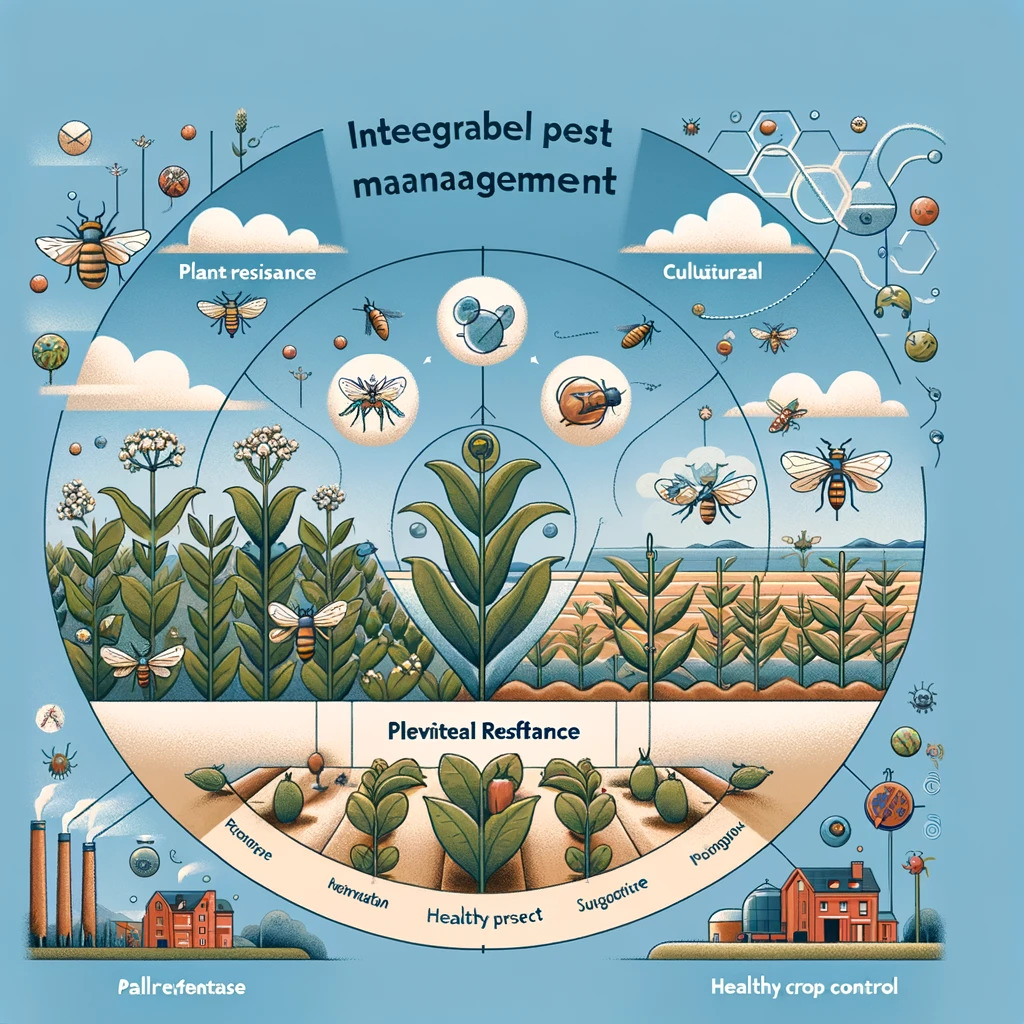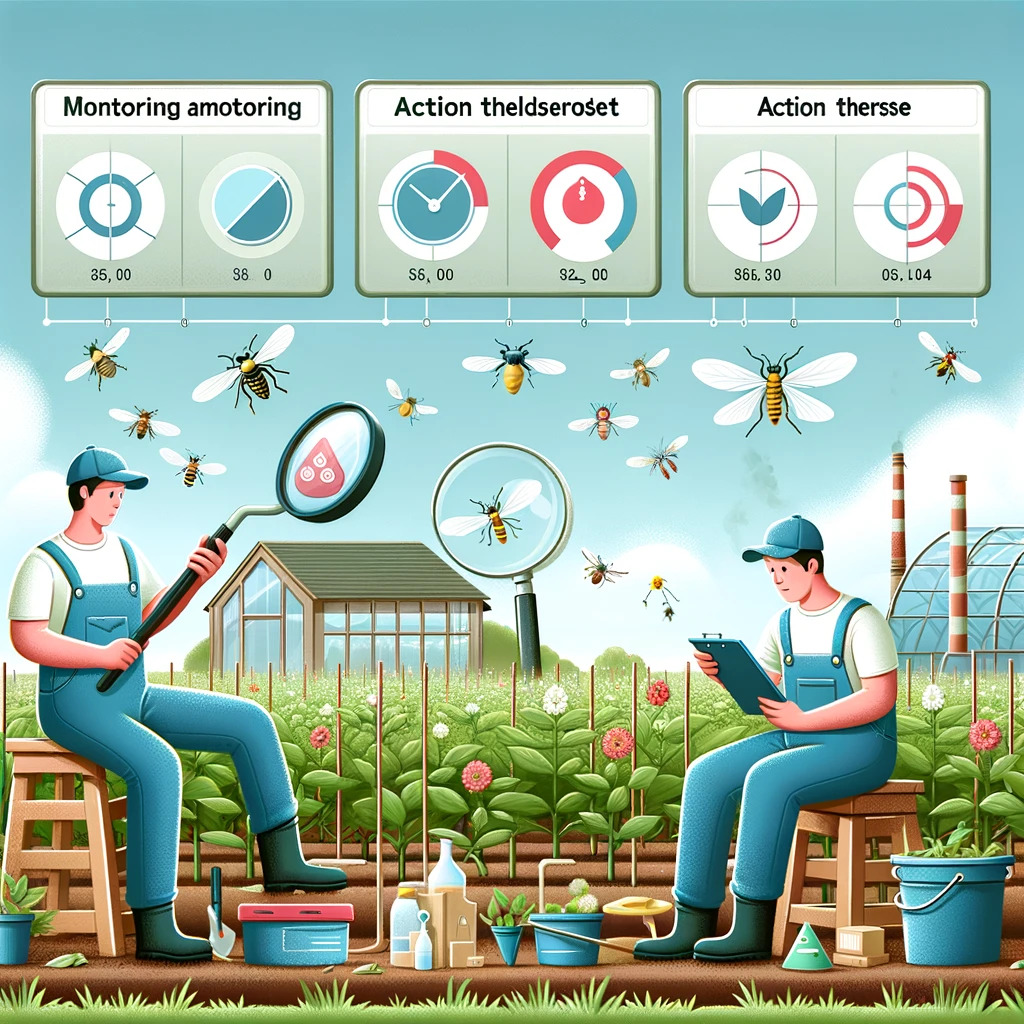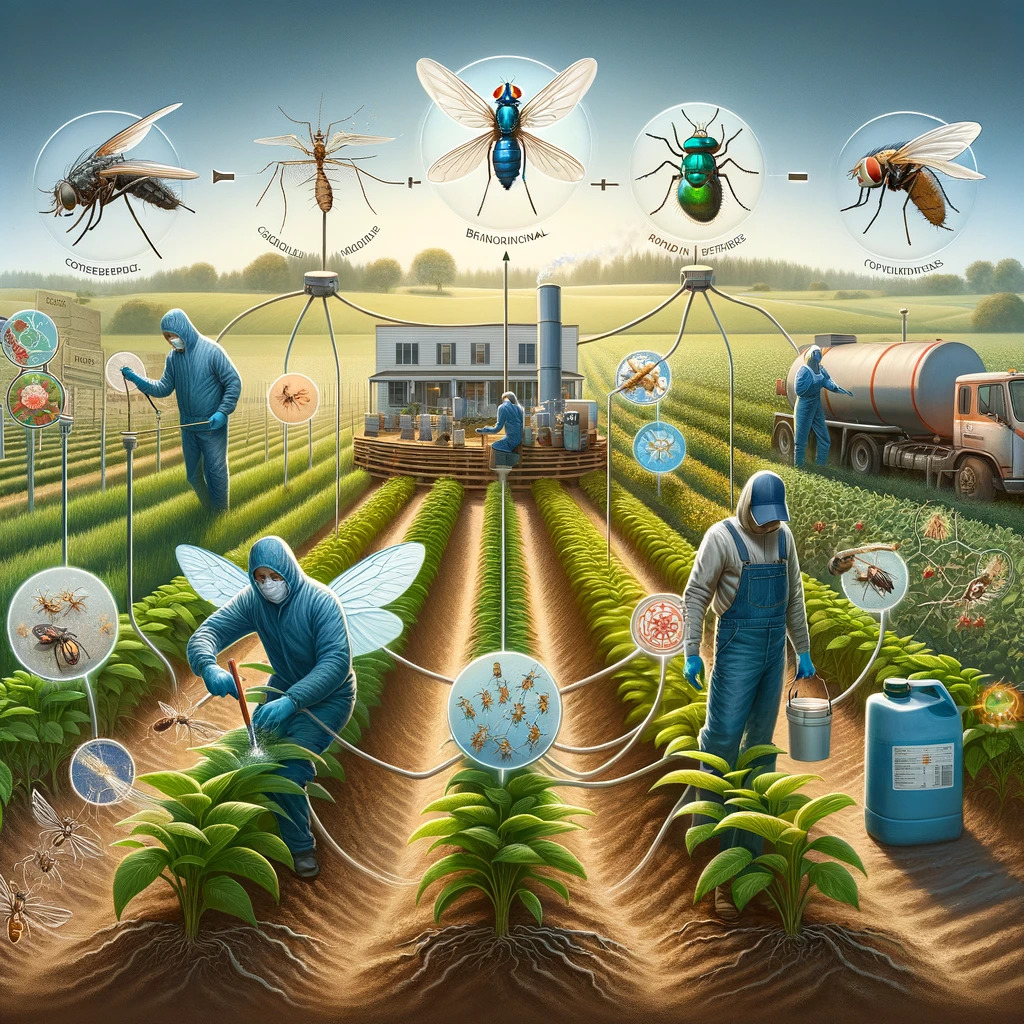Integrated Pest Management (IPM) represents a holistic and sustainable approach to combat whiteflies. This article highlights the importance of combining preventive and control methods to achieve effective management of this pest.
Preventive Strategies in IPM
Prevention plays a crucial role in IPM. This includes the selection of resistant plant varieties, the implementation of appropriate cultural practices, and the maintenance of a healthy growing environment to discourage the proliferation of whiteflies.

Monitoring and Action Threshold
An essential component of IPM is the constant monitoring of pest populations. Establishing an action threshold, the point at which control measures must be implemented, is crucial to prevent significant damage to crops.

Integration of Control Methods
IPM involves the integration of various control methods, including chemical, biological, and physical tactics. The key is to use these strategies in a complementary manner, reducing dependence on pesticides and minimizing environmental impact.

Ongoing Evaluation and Adjustment of Strategies
An essential part of IPM is the continuous evaluation and adjustment of strategies based on results and changing conditions. This ensures an adaptable and effective approach to whitefly management.

Conclusion: Toward Sustainable and Effective Whitefly Management
Integrated Pest Management for whiteflies requires a balanced and thoughtful approach, focused on sustainability and effectiveness. By integrating various strategies, more effective and environmentally friendly control can be achieved.
 AgronoBlog – Agriculture Blog
AgronoBlog – Agriculture Blog